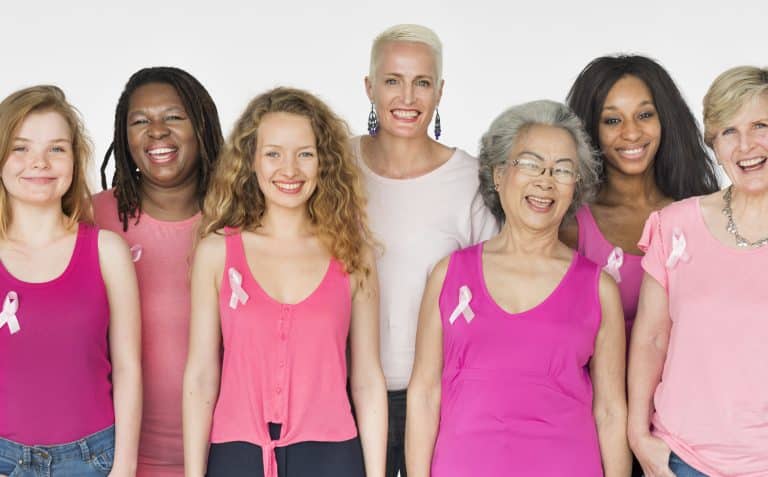
Most of us know that every October symbolizes Breast Cancer Awareness Month around the globe. I witnessed my mother battling breast cancer three times since 1981. She is currently fighting the battle with widespread-metastatic breast cancer. Today she is winning!
According to Breastcancer.org:
- A woman in the U.S. today has a 1 in 8 chance of developing breast cancer over her lifetime and a 1 in 39 chance of dying from breast cancer.
- Nearly 30% of women diagnosed with early-stage breast cancer later develop metastatic breast cancer. U.S. men make up 1 of every 100 breast cancer diagnoses in the country.
- There are about 4 million breast cancer survivors in the U.S., including women receiving breast cancer treatment.
- While the percentage of women dying from breast cancer has gone down in recent decades, Black women remain more likely to die from breast cancer than women of any other racial or ethnic group.
- In women under 45, breast cancer is more common in African-American women than white women. Overall, African-American women are more likely to die of breast cancer. For Asian, Hispanic, and Native-American women, the risk of developing and dying from breast cancer is lower.
- As of January 2022, there are more than 3.8 million women with a history of breast cancer in the U.S. This includes women currently being treated and women who have finished treatment.
- A woman’s risk of breast cancer nearly doubles if she has a first-degree relative (mother, sister, daughter) who has been diagnosed with breast cancer. Less than 15% of women who get breast cancer have a family member diagnosed with it.
- About 5-10% of breast cancers can be linked to gene mutations inherited from one’s mother or father. Mutations in the BRCA1 and BRCA2 genes are the most common. On average, women with a BRCA1 mutation have up to a 72% lifetime risk of developing breast cancer. For women with a BRCA2 mutation, the risk is 69%. Breast cancer that is positive for the BRCA1 or BRCA2 mutations tends to develop more often in younger women. An increased ovarian cancer risk is also associated with these genetic mutations. In men, BRCA2 mutations are associated with a lifetime breast cancer risk of about 6.8%; BRCA1 mutations are a less frequent cause of breast cancer in men.
- About 85% of breast cancers occur in women who have no family history of breast cancer. These occur due to genetic mutations that happen as a result of the aging process and life in general, rather than inherited mutations.
- The most significant risk factors for breast cancer are gender (being a woman) and age (growing older).
In 1995 my mother’s breast surgeon, Katherine Alley, was a personal training client of mine. After my mom’s second diagnosis she begged me to help her in her recovery to avoid all of the pain and debilitation she encountered the first time. I remember the day that I asked Dr. Alley what she thought of writing a book on exercises for breast cancer patients to help them in their recovery. Without hesitation she said “YES!” We solicited the help of the Chiefs of breast surgery at Georgetown George Washington, and Johns’ Hopkins University Hospitals, along with PT’s, OT’s, Patient Navigators, and exercise physiologists. In 2000, “Essential Exercises for Breast Cancer Survivors” was published by Harvard Common Press.
So began my journey into changing the lives of cancer patients worldwide. Since that time I have trained roughly 20,000 health and fitness professionals in 52 countries to become Cancer Exercise Specialists. It’s the most incredible feeling to know that each of these professionals is probably helping many cancer patients and survivors to fend off the debilitating side-effects of treatment as well as regain their pre-cancer level of strength and fitness, or better!
With a physician’s clearance, during cancer treatment, a Cancer Exercise Specialist can help patients determine the proper frequency, intensity, and duration or exercise to help minimize fatigue, increase stamina, improve sleep, decrease pain, prevent lymphedema, and manage stress and potentially counter-depression. During recovery a Cancer Exercise Specialist is trained to identify muscle imbalances and range of motion limitations and how they can be corrected through the proper combination of stretching and strengthening. This is of critical importance following mastectomy, radiation, and reconstruction which may all result in painful and functionally limiting scar tissue and adhesions. They also assess one’s core and balance and can help to manage the difficulties that arise with neuropathy while helping to prevent osteoporosis. Long-term side-effects of treatment may include damage to the heart and lungs, future cancers, diabetes, lymphedema, and osteoporosis; all of which can be minimized or prevented with the proper exercise “prescription.’
“So many people are needlessly suffering in the aftermath of cancer surgery and treatment. I want them to know that there is help! They do not have to accept this as their fate.” – Andrea Leonard
To find a Cancer Exercise Specialist near you, please visit the Cancer Exercise Specialist International Directory.
If you are a health or fitness professional that wants to make a difference in the lives of cancer survivors and are ready to begin your training as a Cancer Exercise Specialist, or Breast Cancer Recovery BOSU(R) Specialist, we want to help you.
Register at: CETI.teachable.com
SCHOLARSHIPS are available – send your request to Andrea@thecancerspecialist.com
